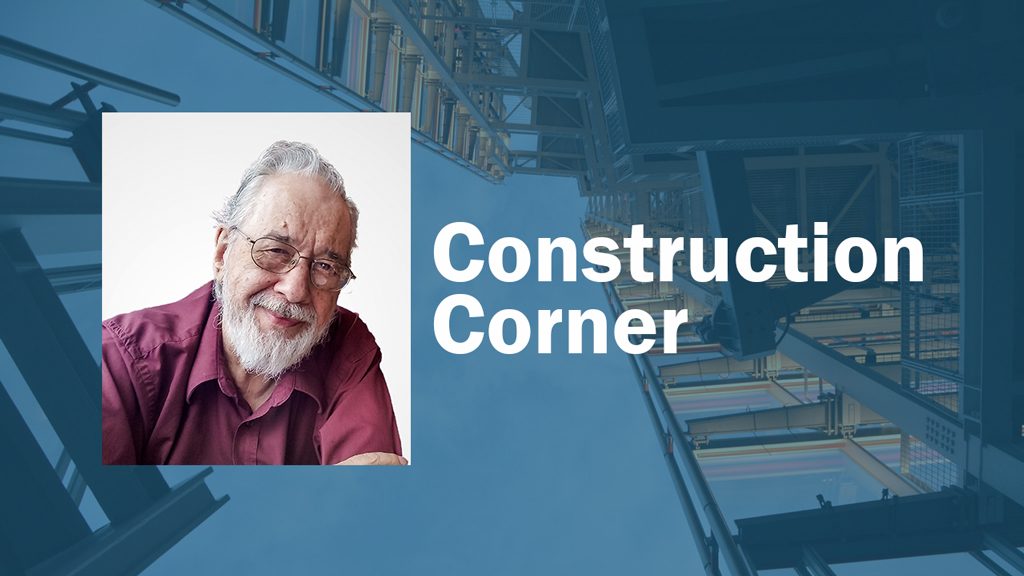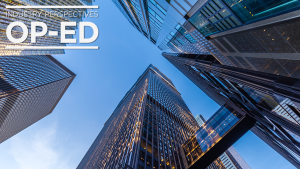Beware of absolutes.
It’s a lesson journalists learn when they’re still very young. If you call something the biggest, tallest or heaviest, it won’t be long before a reader is on the line to tell you about something that is bigger, taller or heavier.
Something similar also happens when you identify a new trend. You find three or four examples of something and you rush to inform readers of a new trend. Except every marketer worthy of the name has a newer, hotter trend that puts yours to shame.
All of this is to explain why new buildings framed with heavy timber may be a trend, or not.
We were told recently the first brick-and-beam buildings in Toronto and New York City are underway, with similar buildings planned or underway in Minneapolis and Portland. These are buildings framed in laminated timber with exterior walls either of load-bearing brick or with a brick facade.
Even a quick glance at photographs of the interiors shows these are undeniably modern buildings with soaring ceilings over wide, open-plan spaces. But the earthiness of the wood, the texture of the brick, speaks more of the cozier buildings of a century ago.
In Toronto’s Liberty Village, west of the city’s downtown core, Quadrangle Architects is putting up a timber-framed building for developer Jeff Hull. Called simply 80 Atlantic, the building is among the first since Ontario’s building code began permitting wood-framed structures as tall as six storeys, up from the previous limit of four storeys.
When people first began experimenting with laminated timber it was seen as an environmentally friendly way to use less steel. But architects and developers are finding these engineered wood products combined with brick instead of concrete, appeals to clients. That’s why Hull said in an article he feels he can charge a premium for space in 80 Atlantic.
In New York City, two relatively low brick-and-beam buildings are going up in Brooklyn. These buildings, designed by Flank Architects, are framed with nail-laminated timber using wood harvested in Chibougamau, Que., then manufactured by the Montreal firm, Nordic Structures.
On that project, the developers report the cost of timber and brick is equivalent to that of steel and concrete but say construction is faster because the timber is prefabricated offsite and fit together when it arrives on the jobsite.
On their website the developers promote the sustainability of their wood framing but admit it’s the esthetic of the wood that seems to be more appealing than the environmental concerns.
Architect Mick Walsdorf says the wood “is much more appealing than the drywall box we’re all used to living and working in.”
In Minneapolis, a seven-storey office project was completed last year using heavy timber framing. The developer there also cited lower costs and faster construction in the decision to embrace timber. In fact, the timber superstructure enclosing 16,700 square metres went up in just nine-and-a-half weeks.
And an affordable housing project called Framework is also using heavy timber. It is under construction in Portland, Ore. It will go up 12 storeys and the developer says it will save an estimated 60 per cent of carbon emissions when compared to a similar, but conventionally constructed building.
The manufacture of cement, concrete and steel is responsible for a lot of carbon emissions, so the construction industry has long been interested in possible alternatives. Trees absorb carbon dioxide as they grow and that carbon is embodied in the trees when they are harvested and shipped off to mills to be turned into glue-laminated timber, cross-laminated timber or nail-laminated timber.
That means less carbon dioxide in the air, which is a win for the environment. Couple that with a shorter construction time and the appeal of heavy timber is undeniable.
Has all that led to a trend in office construction? Ask me again in a few years.
Korky Koroluk is an Ottawa-based freelance writer. Send comments to editor@dailycommercialnews.com.










Recent Comments
comments for this post are closed